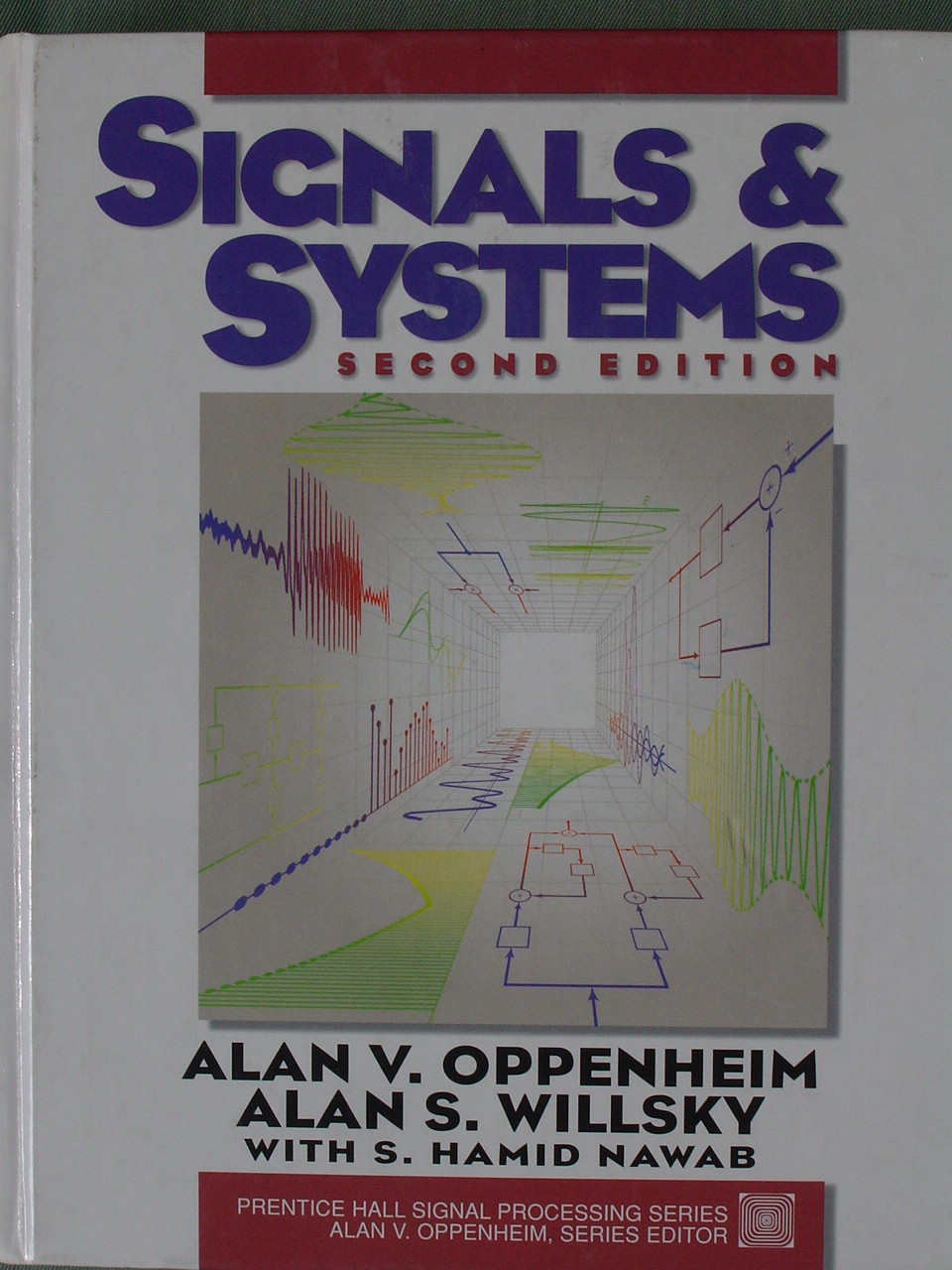
| 编号 | JXS005 |
|---|---|
| 书名 | Signals & Systems, 2nd Edition |
| 作者 | Alan V. Oppenheim,Alan S. Willsky |
| 出版社 | Prentice |
| 出版时间 | 1996年 |
| 类别 | 教学参考 |
| 状态 | 正常 |
| 简介 | 1. Signals and Systems. Continuous-Time and Discrete-Time Signals. Transformations of the Independent Variable. Exponential and Sinusoidal Signals. The Unit Impulse and Unit Step Functions. Continuous-Time and Discrete-Time Systems. Basic System Properties. 2. Linear Time-Invariant Systems. Discrete-Time LTI Systems: The Convolution Sum. Continuous-Time LTI Systems: The Convolution Integral. Properties of Linear Time-Invariant Systems. Causal LTI Systems Described by Differential and Difference Equations. Singularity Functions. 3. Fourier Series Representation of Periodic Signals. A Historical Perspective. The Response of LTI Systems to Complex Exponentials. Fourier Series Representation of Continuous-Time Periodic Signals. Convergence of the Fourier Series. Properties of Continuous-Time Fourier Series. Fourier Series Representation of Discrete-Time Periodic Signals. Properties of Discrete-Time Fourier Series. Fourier Series and LTI Systems. Filtering. Examples of Continuous-Time Filters Described by Differential Equations. Examples of Discrete-Time Filters Described by Difference Equations. 4. The Continuous-Time Fourier Transform. Representation of Aperiodic Signals: The Continuous-Time Fourier Transform. The Fourier Transform for Periodic Signals. Properties of the Continuous-Time Fourier Transform. The Convolution Property. The Multiplication Property. Tables of Fourier Properties and Basic Fourier Transform Pairs. Systems Characterized by Linear Constant-Coefficient Differential Equations. 5. The Discrete-Time Fourier Transform. Representation of Aperiodic Signals: The Discrete-Time Fourier Transform. The Fourier Transform for Periodic Signals. Properties of the Discrete-Time Fourier Transform. The Convolution Property. The Multiplication Property. Tables of Fourier Transform Properties and Basic Fourier Transform Pairs. Duality. Systems Characterized by Linear Constant-Coefficient Difference Equations. 6. Time- and Frequency Characterization of Signals and Systems. The Magnitude-Phase Representation of the Fourier Transform. The Magnitude-Phase Representation of the Frequency Response of LTI Systems. Time-Domain Properties of Ideal Frequency-Selective Filters. Time- Domain and Frequency-Domain Aspects of Nonideal Filters. First-Order and Second-Order Continuous-Time Systems. First-Order and Second-Order Discrete-Time Systems. Examples of Time- and Frequency-Domain Analysis of Systems. 7. Sampling. Representation of a Continuous-Time Signal by Its Samples: The Sampling Theorem. Reconstruction of a Signal from Its Samples Using Interpolation. The Effect of Undersampling: Aliasing. Discrete-Time Processing of Continuous-Time Signals. Sampling of Discrete-Time Signals. 8. Communication Systems. Complex Exponential and Sinusoidal Amplitude Modulation. Demodulation for Sinusoidal AM. Frequency-Division Multiplexing. Single-Sideband Sinusoidal Amplitude Modulation. Amplitude Modulation with a Pulse-Train Carrier. Pulse-Amplitude Modulation. Sinusoidal Frequency Modulation. Discrete-Time Modulation. 9. The Laplace Transform. The Laplace Transform. The Region of Convergence for Laplace Transforms. The Inverse Laplace Transform. Geometric Evaluation of the Fourier Transform from the Pole-Zero Plot. Properties of the Laplace Transform. Some Laplace Transform Pairs. Analysis and Characterization of LTI Systems Using the Laplace Transform. System Function Algebra and Block Diagram Representations. The Unilateral Laplace Transform. 10. The Z-Transform. The z-Transform. The Region of Convergence for the z-Transform. The Inverse z-Transform. Geometric Evaluation of the Fourier Transform from the Pole-Zero Plot. Properties of the z-Transform. Some Common z-Transform Pairs. Analysis and Characterization of LTI Systems Using z-Transforms. System Function Algebra and Block Diagram Representations. The Unilateral z-Transforms. 11. Linear Feedback Systems. Linear Feedback Systems. Some Applications and Consequences of Feedback. Root-Locus Analysis of Linear Feedback Systems. The Nyquist Stability Criterion. Gain and Phase Margins. Appendix: Partial-Fraction Expansion. Bibliography. Answers. Index. Customer Reviews: 1 Average Customer Rating: Oct 9, 2004 Dinesh from New Mexico Very good The book is excellent for the first course in signals and systems. It is well organised and provides a clear understanding of the subject Forgot your password? FAQs Shipping Options Returns Your Orders Your Account |




 出版教材
出版教材 中心藏书
中心藏书